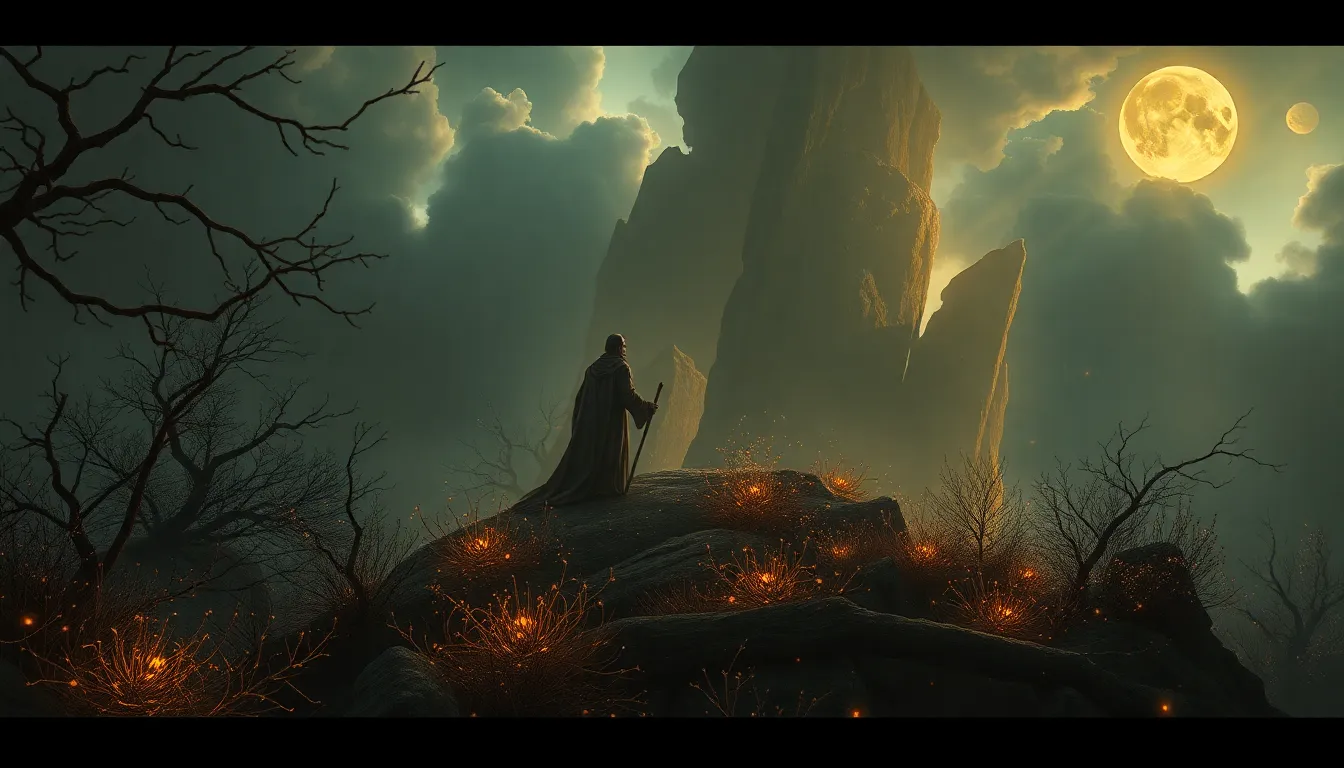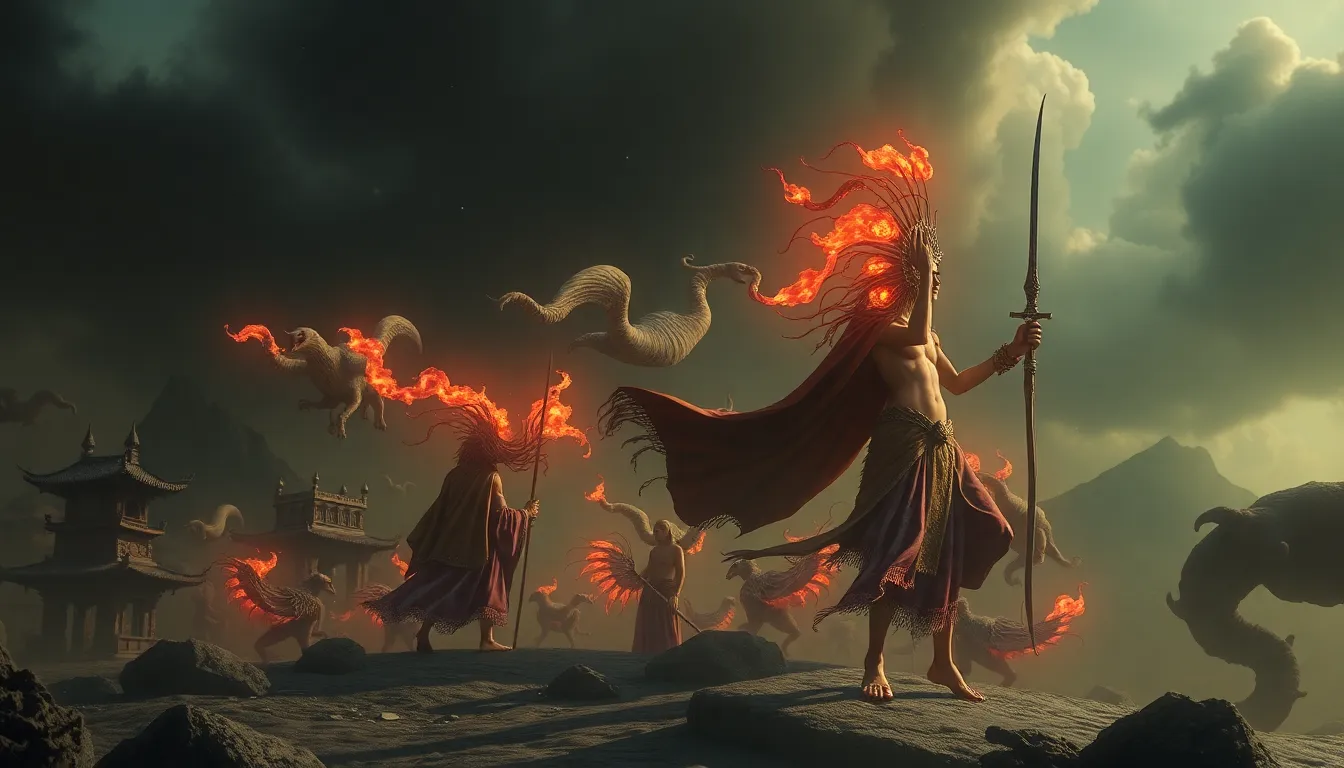Quetzalcoatl and the Transformation of Humanity: The Feathered Serpent’s Role in the Evolution of Man
I. Introduction
Quetzalcoatl, known as the Feathered Serpent, is one of the most significant deities in Mesoamerican mythology. Revered by various cultures, including the Olmecs, Toltecs, and Aztecs, Quetzalcoatl symbolizes a rich tapestry of cultural beliefs and practices that have shaped human history. His image evokes a blend of divine and earthly attributes, representing both the sky and the earth, and emphasizing the duality inherent in life itself.
The significance of Quetzalcoatl extends beyond mere mythology; he has played a crucial role in the development of Mesoamerican civilizations, influencing their social structures, religious practices, and cultural achievements. This article aims to explore how Quetzalcoatl has impacted human evolution and societal development, shedding light on his multifaceted role as a catalyst for transformation.
II. The Mythology of Quetzalcoatl
A. Origins and attributes of Quetzalcoatl in Mesoamerican mythology
Quetzalcoatl’s origins are deeply embedded in the mythologies of ancient Mesoamerica. He is often depicted as a serpent adorned with feathers, symbolizing the connection between the celestial and terrestrial realms. In various accounts, Quetzalcoatl is credited with the creation of humanity, the introduction of agriculture, and the establishment of societal norms.
B. Symbolism of the Feathered Serpent: Duality of earth and sky
The Feathered Serpent embodies duality, representing the intersection of earth and sky. This symbolism is evident in:
- Nature: Quetzalcoatl’s connection to both rain and wind, essential elements for agriculture.
- Spirituality: His representation of the balance between physical existence and spiritual enlightenment.
- Humanity: The notion that humans possess both animal instincts and divine potential.
C. Comparison with other mythological figures in global traditions
Quetzalcoatl shares similarities with other mythological figures worldwide. For instance, he can be compared to:
- Prometheus: Both figures are associated with the gift of knowledge and the betterment of humanity.
- Odin: The Norse god represents wisdom and the pursuit of understanding, akin to Quetzalcoatl’s teachings.
- Buddha: Both embody enlightenment and the quest for self-awareness.
III. Historical Context of Quetzalcoatl’s Influence
A. Quetzalcoatl in the ancient civilizations of the Olmecs, Toltecs, and Aztecs
Quetzalcoatl was a pivotal figure in the ancient civilizations of Mesoamerica. The Olmecs revered him as a god of wind and rain, while the Toltecs viewed him as a cultural hero who brought civilization to the people. The Aztecs, later, adopted him into their pantheon, further solidifying his importance.
B. The significance of Quetzalcoatl in pre-Columbian society and spirituality
In pre-Columbian societies, Quetzalcoatl was not just a deity but a symbol of order and morality. His teachings emphasized:
- Respect for nature and the environment.
- The importance of community and cooperation.
- Spiritual growth and the quest for knowledge.
C. Historical accounts and interpretations of Quetzalcoatl’s teachings
Various historical accounts, including codices and oral traditions, provide insight into Quetzalcoatl’s teachings. They often emphasize themes of renewal, creation, and the cyclical nature of life, reflecting the worldview of Mesoamerican cultures.
IV. Quetzalcoatl as a Catalyst for Cultural Evolution
A. The promotion of agriculture, art, and science under Quetzalcoatl’s influence
Quetzalcoatl is credited with promoting agriculture, which allowed civilizations to thrive. He taught the people about:
- Crop cultivation methods.
- Calendar systems for planting and harvesting.
- Artistic expression as a form of worship and cultural identity.
B. Quetzalcoatl’s role in fostering trade and communication between civilizations
Through his teachings, Quetzalcoatl encouraged trade and diplomacy among different groups. This exchange of goods and ideas led to:
- Cultural diffusion and the spread of technology.
- Enhanced relationships between neighboring civilizations.
- Shared religious practices and beliefs.
C. The relationship between Quetzalcoatl and the development of societal structures
Quetzalcoatl’s influence extended to the establishment of societal structures that prioritized:
- Justice and equality.
- Leadership rooted in wisdom and virtue.
- Community-oriented governance.
V. The Feathered Serpent’s Impact on Religion and Spirituality
A. Quetzalcoatl’s teachings on morality, creation, and the cosmos
Quetzalcoatl’s teachings encompassed profound philosophical ideas concerning morality, creation, and the universe. He advocated for:
- Respect for all living beings.
- The interconnectedness of life.
- The cyclical nature of existence.
B. The transformation of religious practices and beliefs through Quetzalcoatl’s mythology
His mythology transformed religious practices, introducing concepts such as:
- Rituals that emphasize harmony with nature.
- Festivals celebrating life and renewal.
- Spiritual quests for knowledge and enlightenment.
C. The enduring legacy of Quetzalcoatl in modern spiritual movements
Quetzalcoatl’s legacy continues to influence modern spiritual movements, inspiring:
- Indigenous rights and cultural renaissance.
- New-age spirituality focused on ecological awareness.
- Artistic expression that honors ancient wisdom.
VI. Quetzalcoatl and the Concept of Human Potential
A. Interpretations of Quetzalcoatl as a symbol of enlightenment and self-awareness
Quetzalcoatl is often interpreted as a symbol of enlightenment, representing the potential for self-awareness and personal growth. His figure encourages individuals to:
- Seek knowledge and understanding.
- Embrace personal transformation.
- Recognize their connection to the universe.
B. The Feathered Serpent’s embodiment of the quest for knowledge and wisdom
Quetzalcoatl embodies the quest for knowledge, urging humanity to pursue wisdom in all forms, including:
- Scientific inquiry and exploration.
- Philosophical reflection and discourse.
- Artistic endeavors as a means of expression.
C. Quetzalcoatl’s influence on contemporary views of human evolution and potential
In contemporary discourse, Quetzalcoatl serves as a reminder of humanity’s potential for growth and evolution. His teachings inspire:
- A holistic approach to personal and societal development.
- A greater emphasis on sustainability and environmental stewardship.
- A recognition of the importance of cultural heritage in shaping identity.
VII. The Modern Relevance of Quetzalcoatl
A. Quetzalcoatl in contemporary culture and literature
Today, Quetzalcoatl appears in various forms of contemporary culture, including literature, art, and film. His image and teachings resonate with themes of:
- Environmentalism and sustainability.
- Spiritual awakening and self-discovery.
- Cultural appreciation and the importance of indigenous narratives.
B. Lessons from Quetzalcoatl’s mythology for today’s global challenges
The lessons derived from Quetzalcoatl’s mythology offer valuable insights for addressing global challenges. They promote:
- Cooperation and understanding among diverse cultures.
- A commitment to protecting the environment.
- Encouragement of ethical




